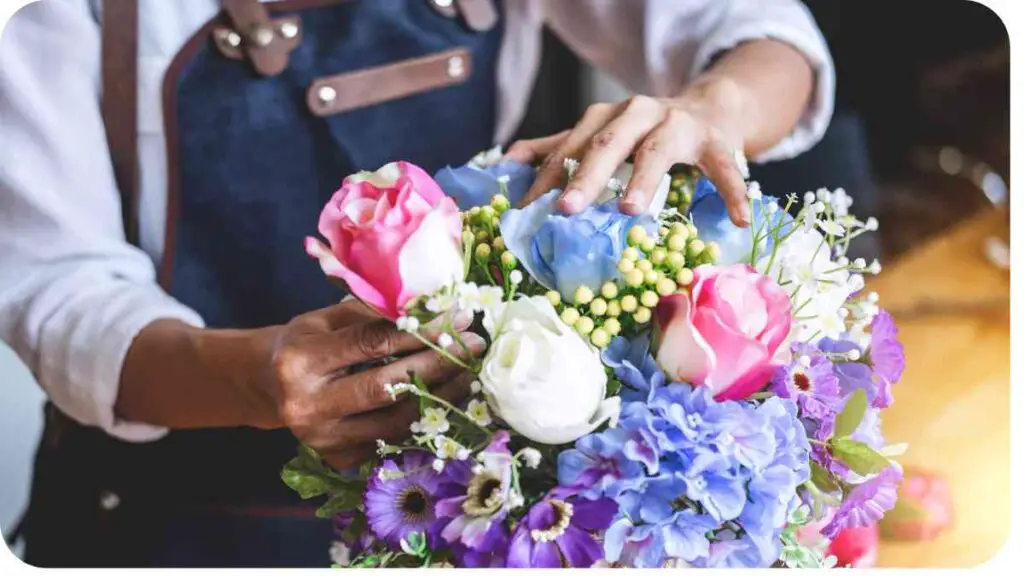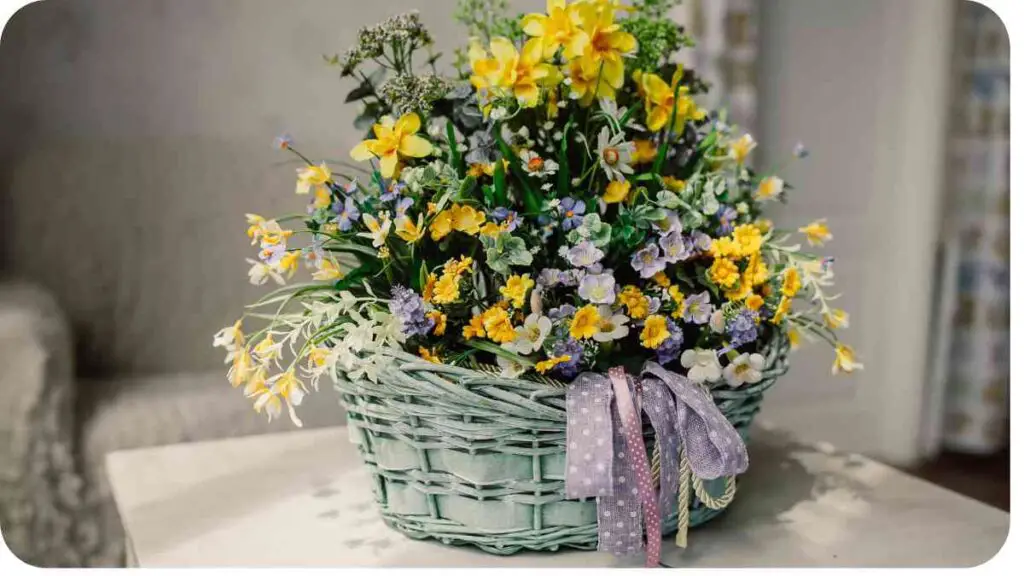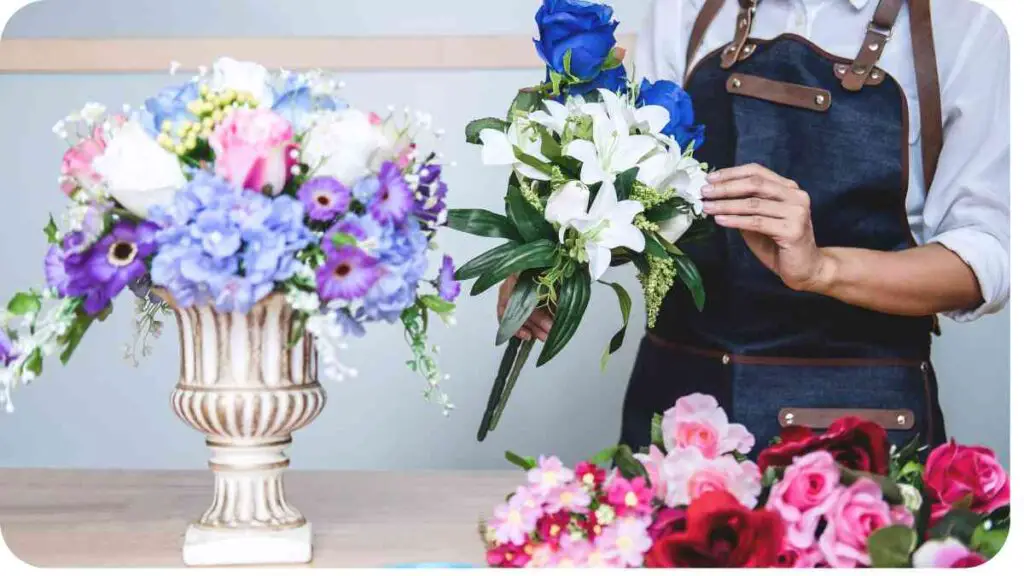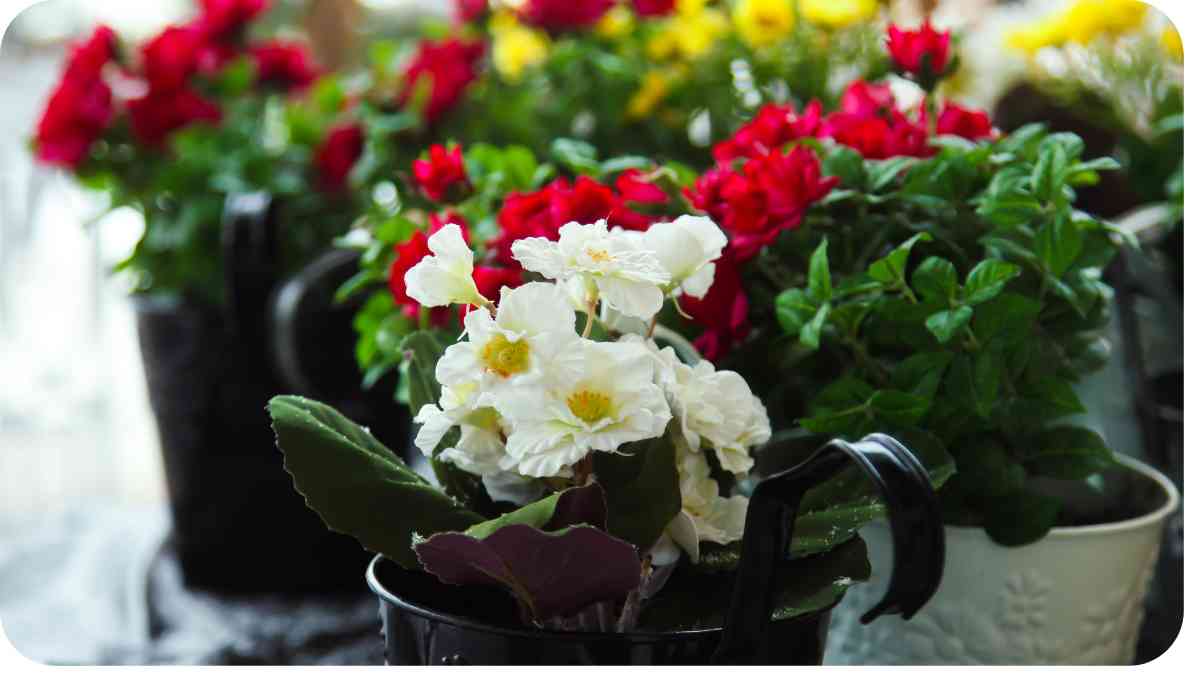Bringing fresh flowers into your home can instantly elevate the ambiance, but nothing is more disheartening than watching those beautiful blooms wilt before their time. However, with the right care and a homemade flower preservative, you can extend the life of your cut flowers and keep them vibrant for longer.
| Key Takeaways |
|---|
| 1. Homemade flower preservatives offer customization and control over ingredients. |
| 2. Basic homemade preservative recipes typically include water, sugar, and an acidic ingredient. |
| 3. Proper flower conditioning and regular water changes are essential for maximizing flower longevity. |
| 4. Avoid common mistakes such as using contaminated tools and neglecting water quality. |
| 5. Homemade flower preservatives can be stored for future use, providing convenience and cost savings. |
2. Why Use Homemade Flower Preservatives?

Before diving into the world of homemade flower preservatives, you might wonder why bother when commercial options are readily available. The answer lies in customization and control. Homemade preservatives allow you to tailor the solution to your specific needs and preferences, ensuring optimal results for your beloved blooms.
Using coffee grounds as a natural fertilizer has significantly enhanced my gardening experience. Incorporating them into homemade flower preservatives has notably prolonged the vibrancy and freshness of my cut flowers.” coffee grounds
3. Understanding Flower Preservation
When it comes to preserving cut flowers, it’s essential to understand the key components that contribute to their longevity. Homemade flower preservatives typically consist of water, a source of carbohydrates, such as sugar, and an acidic ingredient, like citric acid or vinegar. These components work together to nourish the flowers, inhibit bacterial growth, and maintain their freshness.
| Component | Purpose |
|---|---|
| Water | Provides hydration to the flowers |
| Sugar | Serves as a food source for the flowers |
| Acidic Ingredient | Helps lower the pH of the water, preventing bacterial growth |
By balancing these elements, you can create a preservative solution that effectively prolongs the life of your cut flowers.
4. Benefits of Homemade Flower Preservative

While commercial flower preservatives are convenient, homemade versions offer several advantages. Let’s compare the two:
Comparison with Commercial Preservatives
| Aspect | Homemade Flower Preservative | Commercial Flower Preservative |
|---|---|---|
| Cost | Economical | More Expensive |
| Customization | Tailored to individual preferences | Limited customization options |
| Ingredients | Natural and readily available | May contain synthetic additives |
| Effectiveness | Can be just as effective | Widely used and trusted |
| Environmental Impact | Minimal | Packaging and production may have environmental implications |
Homemade flower preservatives not only offer cost savings and environmental benefits but also allow for greater control over the ingredients used.
Identifying signs of fertilizer overload is essential for maintaining the health of gardenias. Through careful observation and proper solutions, I’ve successfully restored balance to my plants, ensuring their longevity and vitality.” fertilizer overload
5. DIY Flower Preservative Recipes
Now that you understand the basics, let’s delve into some simple yet effective homemade flower preservative recipes that you can try at home.
Basic Homemade Flower Preservative Recipe
| Ingredients | Instructions |
|---|---|
| Water | Fill a clean vase with lukewarm water |
| Sugar | Add 1-2 tablespoons of sugar per quart of water |
| Acidic Ingredient | Mix in 2 tablespoons of lemon juice or white vinegar |
| Optional | Add a few drops of bleach to prevent bacterial growth |
Simply combine the ingredients in the specified proportions, mix well, and use the solution to fill your vase. Remember to change the water and trim the stems every few days for optimal results.
Citrus Burst Flower Preservative Recipe
| Ingredients | Instructions |
|---|---|
| Water | Fill a clean vase with room temperature water |
| Sugar | Add 2 tablespoons of sugar per quart of water |
| Lemon | Squeeze the juice of one lemon into the water |
| Aspirin | Crush one aspirin tablet and add to the solution |
The citrus burst from the lemon juice adds a refreshing scent, while the aspirin helps prolong the flowers’ life by reducing acidity in the water.
Exploring the beauty of hanging plants and flowers has been a delightful journey. Understanding their unique needs and providing suitable care has resulted in cascading displays of vibrant blooms adorning my living space.” hanging plants
Sugar and Vinegar Flower Preservative Recipe
| Ingredients | Instructions |
|---|---|
| Water | Fill a clean vase with tepid water |
| Sugar | Dissolve 3 tablespoons of sugar per quart of water |
| Vinegar | Mix in 2 tablespoons of white vinegar |
| Optional | Add a pinch of salt for additional nutrients |
The combination of sugar and vinegar creates an acidic environment that discourages bacterial growth, keeping your flowers fresher for longer.
Aspirin Flower Preservative Recipe
| Ingredients | Instructions |
|---|---|
| Water | Fill a clean vase with cool water |
| Aspirin | Crush one aspirin tablet and dissolve in the water |
| Sugar | Optionally, add 1 tablespoon of sugar for additional nourishment |
Aspirin contains salicylic acid, which acts as a mild preservative and can help prolong the life of your cut flowers.
These DIY recipes offer a range of options to suit your preferences and available ingredients. Experiment with different combinations to find the one that works best for you.
6. Tips for Using Homemade Flower Preservative

Creating the perfect homemade flower preservative is just the first step. To ensure your cut flowers stay fresh and vibrant, consider the following tips:
Discovering local expertise in flower arrangements has added an artistic flair to my floral endeavors. Learning from Fort Lauderdale’s talented florists has enriched my understanding of preserving and presenting flowers beautifully.” flower arrangements
Proper Flower Conditioning
Before arranging your flowers in a vase, it’s essential to properly condition them for maximum longevity. Start by trimming the stems at an angle to create a larger surface area for water absorption. Remove any foliage that would be submerged in the water to prevent bacterial growth. Finally, place the stems in a container of warm water and allow them to hydrate for a few hours before arranging them in your vase with the preservative solution.
Changing the Water Regularly
To keep your flowers looking their best, be sure to change the water in your vase every two to three days. As flowers age, they release bacteria and other contaminants into the water, which can shorten their lifespan. By regularly refreshing the water and adding a fresh batch of preservative, you can help prevent bacterial growth and extend the life of your blooms.
Maintaining Clean Vases and Tools
Dirty vases and cutting tools can introduce harmful bacteria to your flowers, leading to premature wilting and decay. After each use, thoroughly clean your vases with hot, soapy water and rinse them well to remove any residue. Similarly, sanitize your cutting tools by washing them with soap and water or wiping them down with rubbing alcohol. By keeping your equipment clean and sanitized, you can ensure that your flowers receive the care they need to thrive.
7. Common Mistakes to Avoid
While homemade flower preservatives can be highly effective, there are some common pitfalls to watch out for:
Using Contaminated Tools
Using dirty or contaminated vases, cutting tools, or water can introduce harmful bacteria to your flowers, leading to rapid decay. Always make sure to clean and sanitize your equipment before each use to prevent contamination and ensure the longevity of your blooms.
Overlooking Proper Flower Cutting Techniques
The way you cut your flowers can significantly impact their lifespan. Be sure to use sharp, clean scissors or floral shears to make angled cuts on the stems. Avoid crushing or bruising the stems, as this can inhibit water uptake and shorten the life of your flowers.
Neglecting Water Quality
The quality of the water you use can affect the health and longevity of your cut flowers. Use clean, lukewarm water whenever possible, and avoid using water that is too cold or too hot, as extreme temperatures can shock the flowers. Additionally, consider using filtered or distilled water to minimize the presence of contaminants that could harm your blooms.
By avoiding these common mistakes and following the tips outlined above, you can ensure that your homemade flower preservative is as effective as possible in extending the life of your cut flowers.
Arranging for flower delivery has made it convenient to enjoy blossoms at home. Understanding the process of selecting and receiving fresh flowers has elevated my appreciation for their beauty and fragrance.” flower delivery
8. Frequently Asked Questions (FAQs)
As you explore the world of homemade flower preservatives, you may have some lingering questions. Here are answers to some of the most commonly asked questions:
How long does homemade flower preservative last?
Homemade flower preservative can typically last for about one to two weeks when stored in a cool, dark place. However, its effectiveness may diminish over time, so it’s best to prepare fresh batches as needed for optimal results.
Can I use homemade preservative for all types of flowers?
While homemade flower preservatives are generally suitable for most types of cut flowers, some varieties may require specific care or may not respond well to certain ingredients. It’s always a good idea to research the specific needs of the flowers you’re working with and adjust your preservative recipe accordingly.
Can I store homemade flower preservative?
Yes, you can store homemade flower preservative in a clean, airtight container in the refrigerator for future use. Be sure to label the container with the date and contents to avoid confusion. Before using the preservative, allow it to come to room temperature and give it a good stir to ensure that all ingredients are well mixed.
9. Conclusion
Bringing the beauty of the outdoors into your home with fresh cut flowers is a delightful experience. With the help of homemade flower preservatives, you can prolong the lifespan of your blooms and enjoy their vibrant colors and fragrant scents for even longer.
By understanding the key components of flower preservation, experimenting with different recipes, and following best practices for care and maintenance, you can create stunning floral arrangements that brighten any space.
Whether you’re a seasoned florist or a novice enthusiast, homemade flower preservatives offer a customizable, cost-effective solution for keeping your cut flowers looking their best. With a little creativity and attention to detail, you can enjoy the beauty of fresh flowers in your home year-round.
Further Reading
- Real Simple: Homemade Flower Food: Discover how to create homemade flower food to keep your blooms fresh and vibrant for longer.
- HeartySol: How to Make Homemade Flower Food for Lasting Fresh Flowers: Learn step-by-step instructions for making homemade flower food to extend the lifespan of your cut flowers.
- A Quaint Life: How to Make Cut Flowers Last Longer – Tips and Tricks: Explore helpful tips and tricks for making your cut flowers last longer and maintaining their freshness.
FAQs
How long can homemade flower preservative last?
Homemade flower preservative can typically last for about one to two weeks when stored properly in a cool, dark place.
Can I use homemade preservative for all types of flowers?
While homemade flower preservatives are generally suitable for most types of cut flowers, some varieties may require specific care or may not respond well to certain ingredients.
Is it necessary to change the water regularly in the vase?
Yes, changing the water in your vase every two to three days is essential to keep your flowers looking their best and prevent bacterial growth.
What are some common mistakes to avoid when using homemade flower preservative?
Common mistakes to avoid include using contaminated tools, overlooking proper flower cutting techniques, and neglecting water quality.
Can I store homemade flower preservative for future use?
Yes, you can store homemade flower preservative in a clean, airtight container in the refrigerator for future use. Be sure to label the container with the date and contents.

I am Hellen James, a landscape architect. For many years I have written about landscaping for various publications; however, recently decided to focus my writing on personal experience as a profession.

